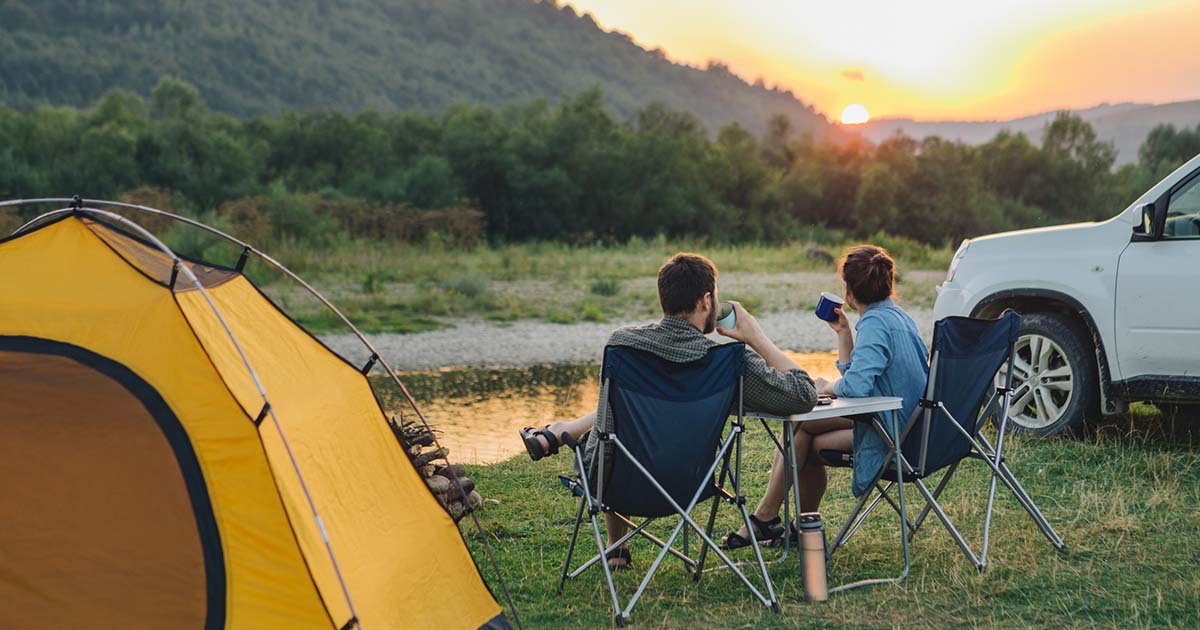Camping, the art of temporarily trading the comforts of home for the serenity of nature, is a timeless pursuit that connects us to the great outdoors. Whether you’re a seasoned adventurer or a novice camper, mastering the art of camping involves more than just pitching a tent. In this comprehensive guide, we’ll delve into a plethora of tips that go beyond the basics, enhancing your camping experience and ensuring your venture into the wilderness is memorable, enjoyable, and safe.

1. Selecting the Ideal Campsite: Setting the Stage for Adventure
Location, Location, Location: Choosing the Right Spot
Picking the perfect campsite is the foundation of a successful camping trip. Look for level ground, consider proximity to water sources, and assess potential hazards like overhanging branches. National and state parks, as well as designated camping areas, often provide well-maintained sites with essential amenities.
Know the Rules: Adhering to Camping Regulations
Before you stake your tent, familiarize yourself with the rules and regulations of the camping area. Some locations may have specific guidelines regarding campfires, wildlife interaction, and waste disposal. Respecting these rules ensures a harmonious experience for all campers and helps preserve the environment.
2. Camping Gear Mastery: Essentials for a Comfortable Stay
Tent Wisdom: Size, Setup, and Ventilation
Invest in a tent that suits your needs. Consider the number of occupants, ease of setup, and weather resistance. Practice setting up your tent at home to streamline the process at the campsite. Ensure proper ventilation to prevent condensation and enhance airflow.
Sleeping Bag Savvy: Warmth and Comfort in the Wilderness
Choose a sleeping bag appropriate for the expected temperature range. Consider factors like insulation type, weight, and size. If camping in colder conditions, bring an insulated sleeping pad to provide an extra layer of warmth between you and the ground.
3. Firecraft Excellence: Mastering the Art of Campfires
Fire Safety 101: Prevention and Preparedness
Before kindling your campfire, understand fire safety basics. Clear the area of debris, create a fire ring if permitted, and have a bucket of water or sand nearby for emergencies. Check for any fire restrictions in the area and never leave a fire unattended.
Firestarter Arsenal: Tools for Ignition
Pack an assortment of fire-starting tools. Waterproof matches, a lighter, and fire starter cubes are reliable options. For a touch of survival skills, practice using a flint and steel or magnesium fire starter – you might find it both practical and satisfying.
4. Culinary Adventures: Elevating Campsite Cooking
Camp Cooking Gear: From Portable Stoves to Dutch Ovens
Invest in portable cooking gear that suits your camping style. Whether it’s a compact stove, a lightweight cookware set, or a versatile Dutch oven, having the right tools can transform campsite cooking into a culinary adventure. Practice using your equipment at home to build confidence.
Meal Planning Brilliance: Simple and Flavorful Recipes
Plan your camping menu ahead of time. Opt for easy-to-prepare, one-pot meals that minimize cleanup. Consider marinating meats or chopping veggies at home to save time at the campsite. Foil packet recipes, skewers, and campfire-friendly desserts add a touch of gourmet to outdoor dining.
5. Navigation Prowess: Navigating the Wilderness with Confidence
Map and Compass Proficiency: A Lost Art Rediscovered
Brush up on map and compass navigation skills. Even if you rely on GPS technology, having a basic understanding of traditional navigation methods is essential. Ensure your maps are up-to-date and waterproof, and always carry a compass as a reliable backup.
Trail Marking Wisdom: Leaving No Trace
Practice Leave No Trace principles when navigating the wilderness. Use established trails to minimize impact on vegetation, and refrain from creating new paths. Follow designated markers and trail signs, and educate yourself about local flora and fauna to avoid disturbing wildlife habitats.
6. Safety and First Aid: Prioritizing Well-being in the Wild
First Aid Kit Essentials: A Lifesaver in the Outdoors
Assemble a comprehensive first aid kit tailored to your trip’s duration and the number of participants. Include items like bandages, antiseptic wipes, pain relievers, blister treatment, and any personal medications. Familiarize yourself with basic first aid procedures for common outdoor injuries.
Emergency Preparedness: Planning for the Unexpected
Anticipate potential emergencies and prepare accordingly. Share your camping itinerary with a trusted friend or family member, carry an emergency whistle, and know the location of the nearest medical facilities. Familiarize yourself with local emergency services and protocols.
7. Leave No Trace: Preserving the Wilderness for Future Generations
Waste Disposal Wisdom: A Green Approach to Camping
Adopt a Leave No Trace mindset by properly disposing of waste. Pack out all trash, including food scraps, and use established restroom facilities or follow proper waste disposal guidelines. Minimize your impact on the environment to ensure the wilderness remains pristine for future generations.
Wildlife Interaction Ethics: Observing from Afar
Respect wildlife by observing from a safe distance. Do not feed or approach animals, as this can alter their natural behavior and lead to dangerous encounters. Carry bear-resistant containers for food storage and follow specific guidelines for camping in bear country.
Conclusion: Crafting Unforgettable Camping Adventures
Camping is more than a recreational activity; it’s an opportunity to reconnect with nature, challenge yourself, and create lasting memories. By mastering the tips outlined in this guide, you’ll not only enhance your camping experience but also become a steward of the wilderness. So, pack your gear, venture into the great outdoors, and let the beauty of nature unfold as you embark on unforgettable camping adventures.